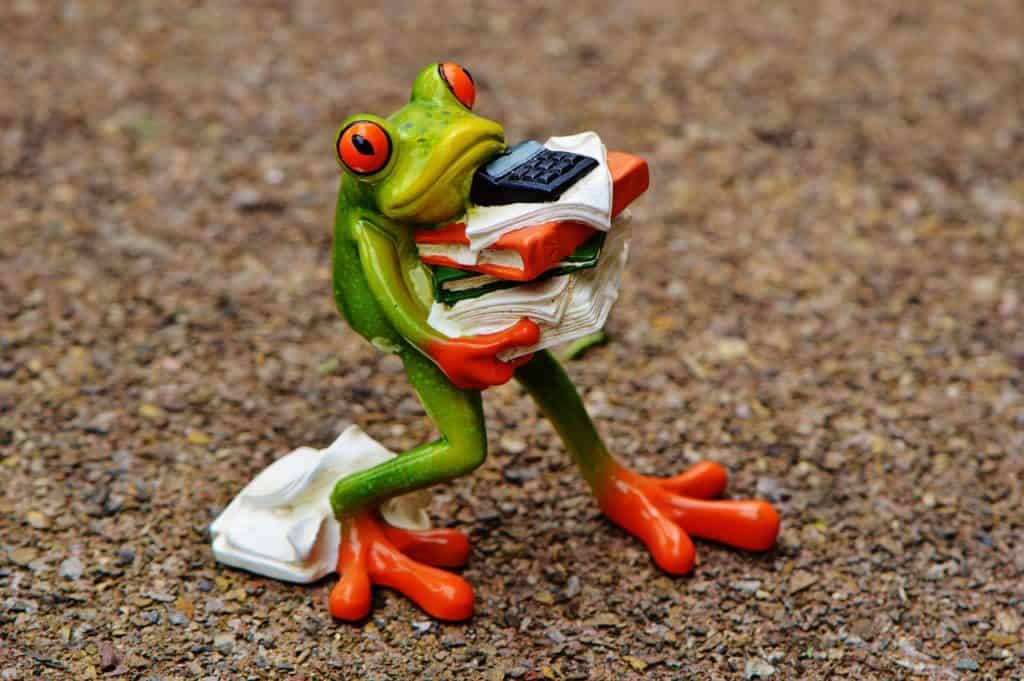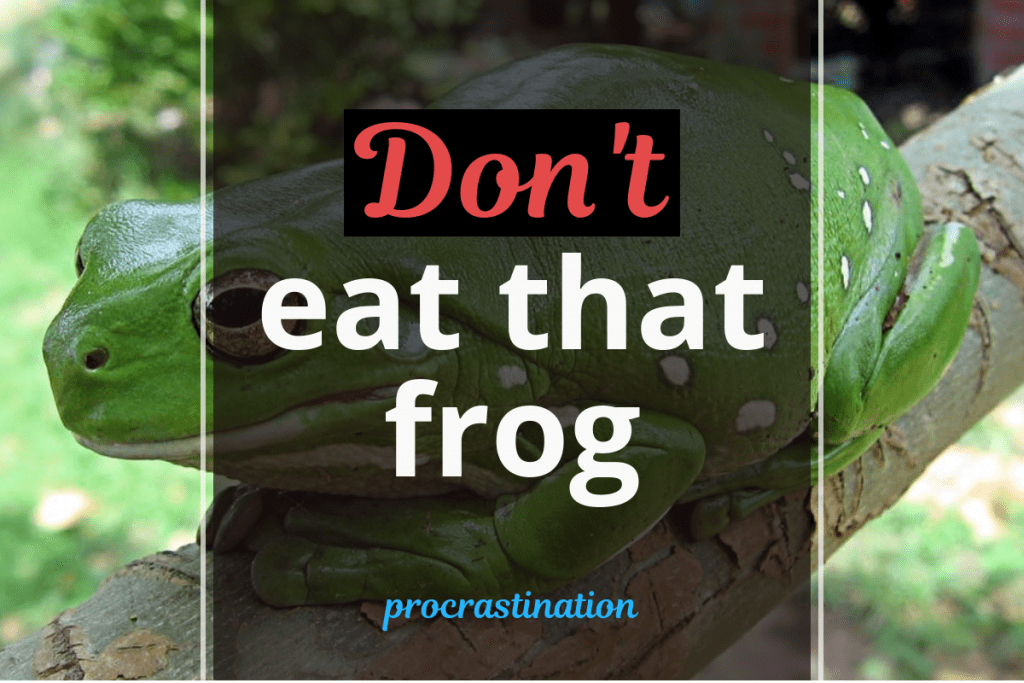🖊 This article was last updated on November 25, 2019
Brian Tracy, the author of the productivity-boosting book “Eat That Frog,” teaches his lesson points from a saying that is frequently credited to Mark Twain:
“Eat a Live Frog Every Morning, and Nothing Worse Will Happen to You the Rest of the Day.”
Luckily for entrepreneurs everywhere, this advice is a metaphor; you don’t really need to eat live frogs with your morning coffee. It refers to taking on your biggest, most challenging task first thing in the morning to stop procrastination.
Personally, I think that “eating frogs” in the morning is a recipe (pardon the pun) for disaster, especially if you are already a procrastinator. It’s too easy to lose your momentum when faced, the first task of the day, with something you think is overwhelming or prone to failure.

Your MIT’s, or Most Important Tasks, need to be addressed before you allow yourself to be distracted by emails and other tasks. Although addressing it in a big, daunting block of impossibilities is counter-productive at best.
This article covers the psychology of breaking things into small steps. In it, the author describes encouraging his students to climb a wall, brick by brick. The best solution is to take those seemingly insurmountable tasks and break them up into smaller pieces. You don’t read “War and Peace” in one sitting; you read the book chapter by chapter until it’s finished. Chapters don’t lessen the greatness of Tolstoy’s masterpiece, they break the concepts, ideas, and storyline of the novel into manageable pieces.
Think of your most pressing MIT’s as elephants, not frogs. If you eat this elephant, you need to serve up manageable pieces and eat them one bite at a time. Your big, daunting MIT is now a series of smaller MITs that can be tackled daily until you reach your goals.
Breaking Down your MIT’s
You will need to take a few minutes and list youMIT’s and an action plan to accomplish them.
- Break the biggest tasks into smaller tasks, or steps: Every task you face can be broken apart into a series of smaller ones that need to be finished, each leading up to the end goal.
- List your action plan for accomplishing each smaller task: Here is where you can plan what steps you need to accomplish each smaller task.
- Give yourself a time limit for each small task: Consider time management tools like timeboxing to set goals for the amount of time you will dedicate to the task.
- Consider the size of your task or project: Be realistic of the time you will need. The task may seem overwhelming enough without placing an unrealistic time limit on it as well.
- Dedicate the time to tackle these tasks without distractions: Don’t check your email, leave the phone turned off, lock the door and tackle the tasks.
Recognize Your Procrastination Habits

You have your own unique way of procrastinating. You may decide that you really need to check those emails right now or check your social media campaign strategy before getting started on a big project. You may even spend too much time at the coffee pot or decide that a project that didn’t require immediate attention before is suddenly the most important thing you need to accomplish in your work life.
Admitting when your distracting activity crosses the line and becomes procrastination is the first step in fighting it. There are reasons we procrastinate, and they don’t mean laziness.
We procrastinate because we are afraid to fail: If we finally do the task, we may do it incorrectly or not get the desired results we had hoped for. We need to accept that failures are just a way of learning and growing.
We procrastinate because we are overwhelmed: If we don’t break these tasks into smaller pieces, they will seem too large to tackle.
We procrastinate because we don’t know where to start: Without “eating the elephant,” the task seems like a round ball of yarn with no perceptible beginning or end.
We procrastinate because we don’t see the task as important: We know it’s important, but if it’s not fighting for our attention the way email alerts and phone calls are, we can easily put it on a back burner. Write the task down somewhere it can be seen regularly so it doesn’t slide out of your scope of attention.
We procrastinate because, on some level, we operate better when under pressure: Some of us seem to operate best when faced with a short timeframe for our projects and tasks. This may seem like it’s an acceptable way to operate, but these spurts of stress-inducing flurries of activity are not healthy for us. Breaking down your tasks will keep you from having to make up for lost time under impossible, self-imposed deadlines.
No matter your procrastination style or habits, “eating an elephant” will benefit you when approaching your tasks.
Conclusion? Choose an Elephant over a Frog
While I agree with the concept of tackling big, MIT’s quickly, I think trying to eat a live frog, all at once, is a self-defeating way to approach your big tasks and an even worse way to try to tackle procrastination.
Eating the proverbial elephant piece by bite-sized piece is a much more viable option for a busy entrepreneur for tasks that seem too big, or that are just dreaded but necessary activities that need to be accomplished to grow your business.
Footnote: No frogs or elephants were harmed, or eaten, in the writing of this article.
- These Black Friday deals will skyrocket your productivity (2021 edition) - November 11, 2021
- How to Stay Productive as a Digital Nomad - December 23, 2019
- When is the right time to outsource? - December 3, 2019

